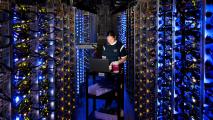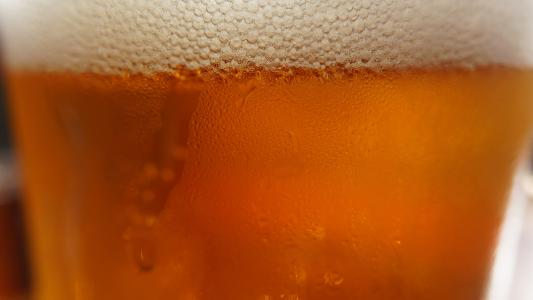This article is an installment of Future Explored, a weekly guide to world-changing technology. You can get stories like this one straight to your inbox every Thursday morning by subscribing here.
Humans consume 350 million tons of meat every year — roughly the weight of 1,000 Empire State Buildings — and the figure is expected to climb to more than 550 million tons by 2050 due to a growing world population, rising incomes, and increased consumption per meat-eater.
That’s a huge problem for efforts to combat climate change.
Livestock are already responsible for 14.5% of global greenhouse gas emissions. These emissions are mainly generated by producing feed for the animals — tractors, fertilizer, land use, etc. — and by cows themselves, which release the potent greenhouse gas methane from both ends of their digestive tracts.
If we want to meet the demand for meat without further harming our planet, we’re going to need to produce it more sustainably. Thankfully, several alternatives to agriculture’s status quo are poised to take a place at the dining table of the future.
Growing meat
By creating the right environment around animal muscle cells, scientists can coax them into growing into meat that’s molecularly identical to the kind we get from livestock — eliminating the need to raise actual animals.
Printed meat: There’s more to meat than just muscle cells, though.
One of the biggest challenges facing the lab-grown meat industry has been replicating the texture of cuts of meat, which contains layers of fat and muscle — and if people can’t get lab-grown steak, they’ll continue to eat the real kind.
In 2021, Japanese researchers showed how 3D-printing tech could be used to give lab-grown beef the distinct marbling of fat found in Wagyu steaks — opening the door to not only creating steak in the lab, but also custom designing our perfect cut of sustainable beef.
Ethical sausage: Almost all lab-grown meat starts in a culture with fetal bovine serum (FBS), which still comes from animals. But not all.
In July 2022, Dutch biotech company Meatable unveiled a sausage made from lab-grown pork — and unlike the first lab-grown hamburger and most other cultured meat products, the company didn’t use FBS to cultivate it.
Because FBS is collected from unborn calves when their mothers are slaughtered, we still need to raise some cattle to obtain it. By eliminating it from the ingredient list, Meatable has made its lab-grown meat more environmentally friendly — and, arguably, more ethical.

Exotic meats: Most cultured meat startups are working to replicate pork, poultry, and beef — the most commonly consumed meats — but early-stage UK startup Primeval Foods is thinking wilder, developing lab-grown lion, tiger, and zebra meat.
This focus on exotic creatures might not do much to make traditional agriculture greener, but the opportunity to taste an animal they’d otherwise never find on a restaurant menu could inspire diners who might not bother with lab-grown meat to try it for the first time.
The bottom line: While lab-grown meat is cheaper today than it was in 2013, when it cost $300,000 to grow enough meat for a hamburger, it’s still far more expensive than traditional meat, so manufacturers will need to continue to find ways to cut costs while scaling-up production.
They’ll also need to navigate regulatory red tape — Singapore is currently the only nation where cultured meat is approved for sale, though experts believe we could see a product on Americans’ dinner plates as soon as 2023.
Hacking livestock
To make the future of meat more sustainable, some scientists propose we hack the diets — and genes — of livestock to make them less of a burden on the environment.
Bugging out: Instead of feeding livestock grains — the production of which contributes to deforestation in the Amazon and adds more greenhouse gasses to the atmosphere — Texas State University researchers think we should let the animals dine on insects.
Their research has already shown that the larvae of black soldier flies can be fed to cattle in lieu of traditional protein sources, such as soybean meal, without any noticeable negative effects, and in 2023, they plan to publish a paper detailing how the bug-feed may reduce the animals’ methane emissions, too.
Seaweed snack: In March 2021, UC Davis researchers published the results of a study in which a small amount of seaweed was added to the diets of beef cattle.
This seaweed inhibited an enzyme linked to methane production in the animals’ digestive systems. As a result, the cattle produced 82% less methane emissions than their standard-diet counterparts. The seaweed didn’t affect the animals’ weight or the taste of their meat, either.

Better breeding: Some cattle seem to naturally produce less methane than others, but no one knew why until 2019, when a team led by University of Aberdeen researchers published a study detailing how genetics strongly influences the makeup of microbes in a cow’s gut.
Armed with this knowledge, they say farmers could choose to breed only those animals whose genes make them low emitters — or use gene-editing tech such as CRISPR to quickly make any breed of cattle climate-friendly.
The bottom line: These options would require farmers to rethink how they raise livestock — and, in the case of gene-editing, require greenlights from regulators — but they’d be easier to scale up than lab-grown meat.
Waste not…
Livestock waste is another way meat burdens the environment — manure and urine can both release damaging chemicals into the land and air. Thankfully, some scientists are working on this, let’s say, “less-glamorous” aspect of agriculture to make it more sustainable, too.
Waste to fuel: In an effort to make their operations more sustainable — and more profitable — a growing number of livestock farmers are installing “biodigesters” on their farms.
These devices take advantage of microorganisms found in manure to separate it into a liquid fertilizer and several gasses (mostly methane and CO2).
The fertilizer can be used on a farmer’s fields, and the gasses can be used to generate electricity. (Burning the methane, which releases carbon dioxide, is actually still far better for the environment than just releasing it into the air, since methane is a much more potent greenhouse gas.)
MooLoos: When mixed with microbes in soil, cow urine produces nitrous oxide (N2O), which is even worse than methane. While methane’s warming potential is 30 times greater than CO2, N2O is 273 times more potent.
With a single cow producing eight gallons of urine a day, the environmental impact of cow wee adds up.
Researchers in Germany and New Zealand recently demonstrated that cows can be trained to urinate in a designated area if given a little encouragement (i.e., a tasty snack). If this discovery could be used to collect even 10% of cow urinations, it could “significantly” reduce greenhouse gas emissions, according to the researchers.

Fired up: The idea of heating animal manure to 537 degrees Celsius (1,000 degrees Fahrenheit) might sound incredibly smelly (and surely is), but it can also be a profitable way to make meat production more sustainable.
Researchers from the USDA and the University of Pretoria have developed a mobile system that uses a heating process called “pyrolysis” to convert a farm’s manure, grasses, and woody materials into a synthetic fuel that can then be used on the farm, to generate heat or electricity, or sold.
The bottom line: While it’s unlikely livestock farmers are going to begin potty training their herds en masse, interest in biodigesters and pyrolysis systems is growing. If the trend continues, the farms of the future could be both more sustainable and more profitable.
Ultimately, we are going to need a huge range of innovations to reduce meat’s impact on the climate. But the good news is that researchers are tackling the problem all over the world — and they may end up creating an industry that’s safer and more ethical, not just more sustainable.
We’d love to hear from you! If you have a comment about this article or if you have a tip for a future Freethink story, please email us at [email protected].






